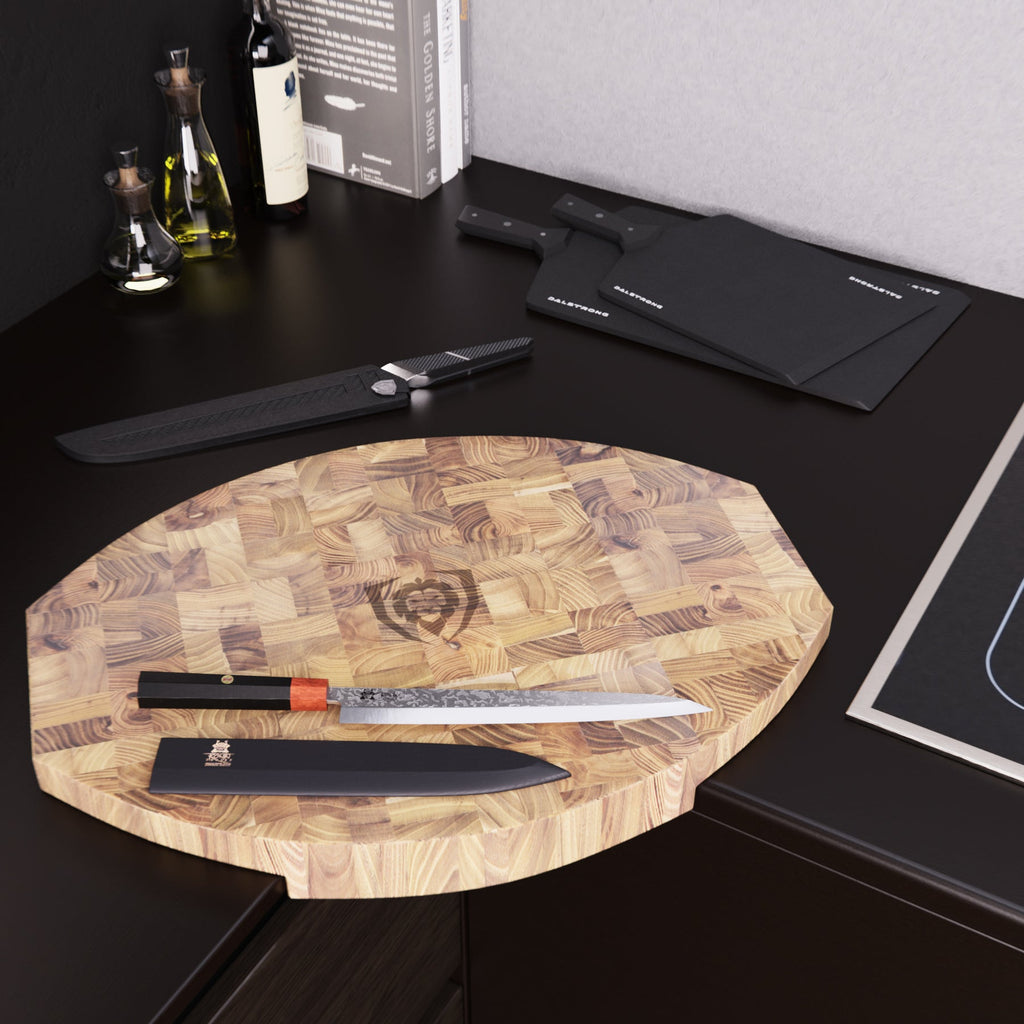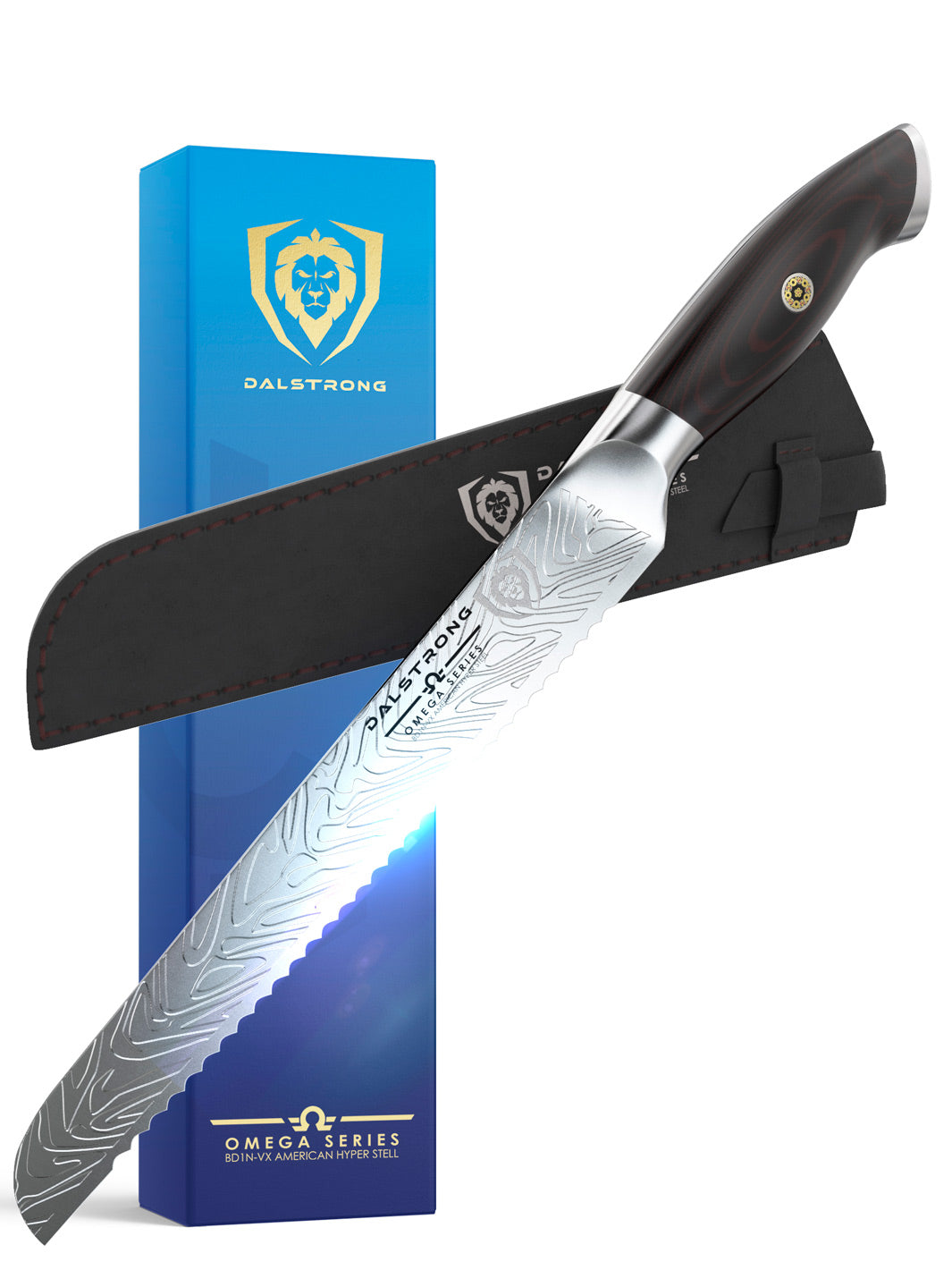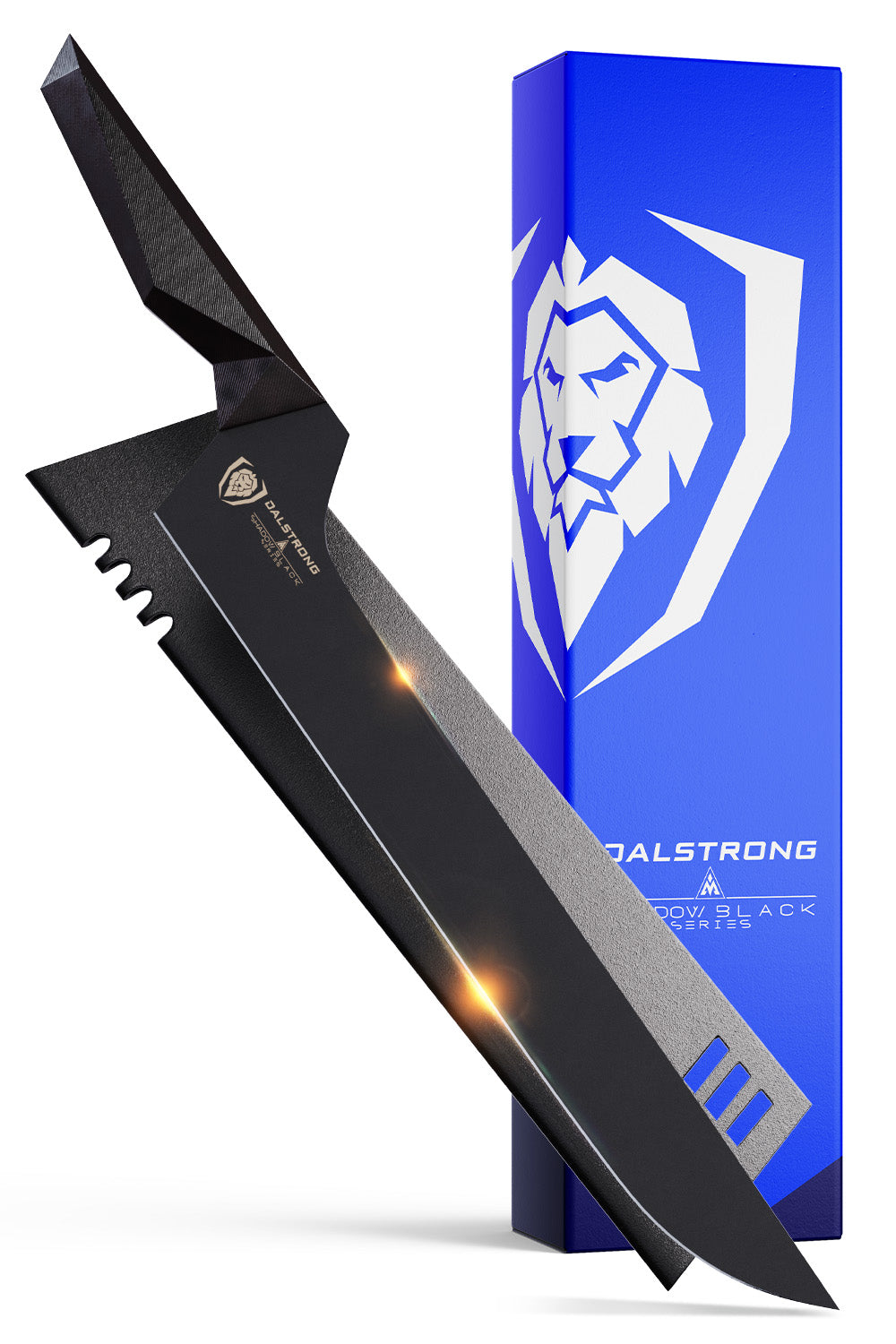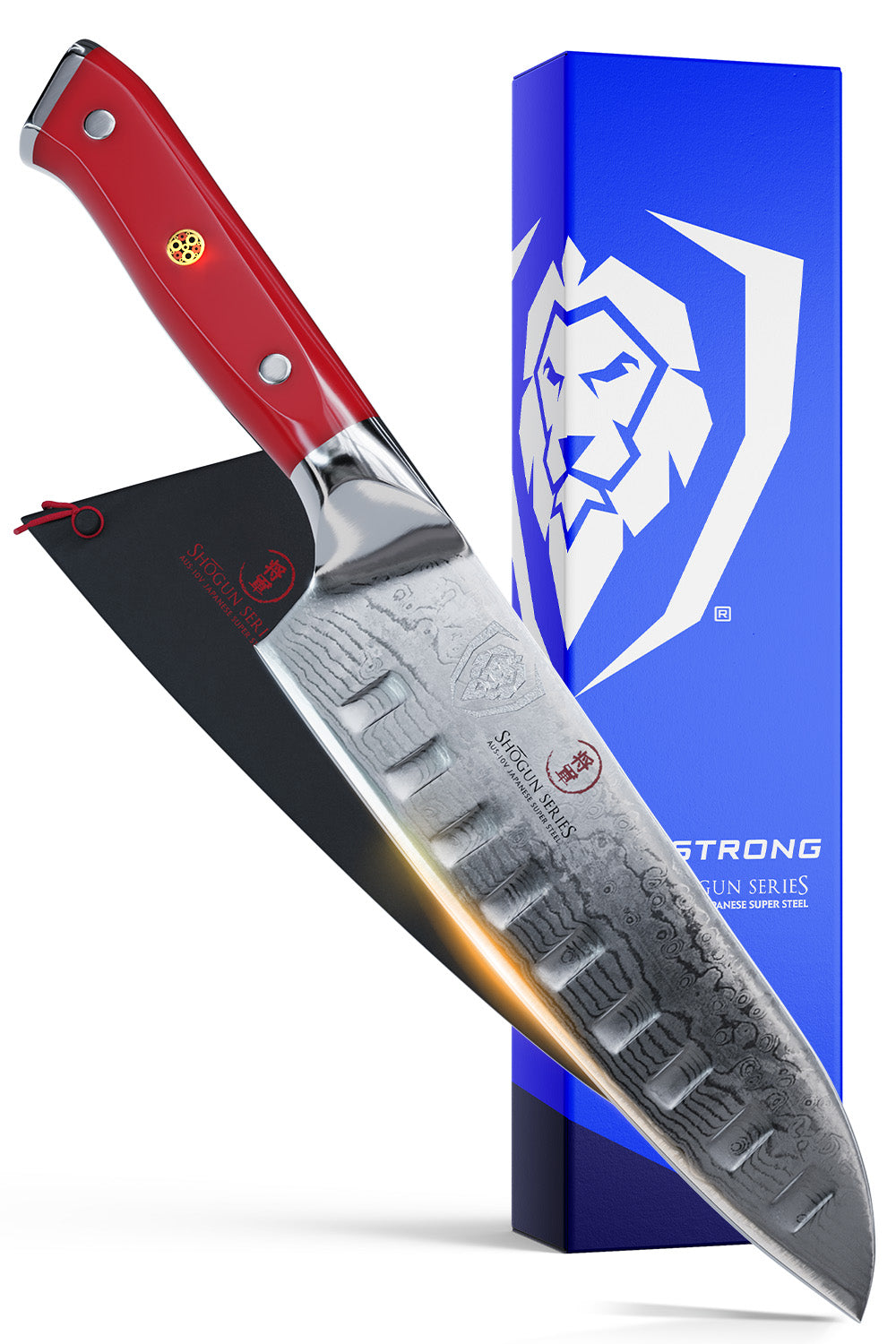You may have heard of mineral oil being used as a moisturizing and conditioning ingredient for wood furniture, hardwood floors, and even stubborn stains. Yep, so you don’t need to run for bleach solutions to clean up your favorite wood decor. But let’s get back to the topic.
Did you know that mineral oil is just as effective on wood cutting boards? That’s right! Let’s discover everything you need to know about mineral oil, its uses, and how it is effortless to use with just a few steps.
1. What Is Mineral Oil & Why Does Every Kitchen Need It?
 Lionswood Teak Cutting Board Medium Size Dalstrong
Lionswood Teak Cutting Board Medium Size Dalstrong
For maintaining and caring for cutting boards, wood salad bowls, cast iron skillets, wood furniture, wood countertops, and warped or cracked wood boards, mineral oil is a useful and important product for every kitchen. It is best to use mineral oil in areas where food is prepared because it is a type of food-grade oil that is safe for contact with food.
Wood boards and butcher blocks can benefit greatly from routine maintenance with mineral oil. By keeping the wood fibers moisturized, this oil helps to keep them from cracking, drying out, or absorbing unpleasant odors. Your cutting board's longevity and natural beauty can be preserved by using mineral oil on it.
When choosing mineral oil for your cutting board, make sure to choose a food-grade mineral oil that is expressly labeled as safe for contact with food. By doing this, you can be sure that no dangerous substances will contaminate your food as it is being prepared.
2. Different Oils To Use On Cutting Boards
 Teak Cutting Board Large Size Horizontal Grain Dalstrong
Teak Cutting Board Large Size Horizontal Grain Dalstrong
When it comes to choosing the right oil for your cutting board, there are several options available. While mineral oil is commonly recommended, there are alternative oils that can be used to maintain and protect your cutting boards oiled. Here are a few different oils you can consider:
- Food-grade mineral oil is a popular choice for cutting boards because it’s known for its safety and effectiveness.
- Coconut oil is another genuine oil that can be used on cutting boards. It has antimicrobial properties and a pleasant fragrance, which can help keep your cutting board fresh.
- Butcher block oil is best used on wood boards and butcher blocks as they’re glossier and have a wax-like consistency.
- Board cream is made with mineral oil and beeswax. Board cream is excellent for rejuvenating dry, rough, and damaged cutting boards.
- Some people also go for other oils like olive oil, walnut oil, or even vegetable oil. However, it's important to note that these oils can turn rancid over time and can decrease the durability of your board in the longer run.
3. Advantages Of Mineral Oil For Cutting Boards
 Lionswood Teak Cutting Board Medium Size Dalstrong
Lionswood Teak Cutting Board Medium Size Dalstrong
There are a few advantages to applying mineral oil to cutting boards. Here are some advantages.
- Mineral oil is a food-grade oil specifically formulated to be safe for contact with food. This is crucial when it comes to maintaining cutting boards, as they are used for food preparation. Using mineral oil ensures that no harmful substances will leach into the food during food prep.
- Mineral oil helps to moisturize and nourish the wood fibers of cutting boards. This prevents the wood from drying out, cracking, or splitting over time. By keeping the wood hydrated, mineral oil helps to extend the lifespan of the cutting board and maintain its structural integrity.
- When applied to a cutting board, mineral oil forms a protective barrier on the surface of the wood. This barrier helps to repel moisture, preventing the wood from absorbing liquids and reducing the risk of warping or swelling. It also creates a barrier against bacteria, making the cutting board more hygienic.
- Mineral oil is quite easy to apply. You can use a clean cloth or napkin to spread the oil equally over the surface of the cutting board. Its thin consistency allows for easy absorption into the wood fibers, ensuring thorough coverage.
- Mineral oil is odorless and tasteless, which means it won't affect the flavor or aroma of the food prepared on the cutting board oiled. This is particularly important when working with delicate ingredients or when using the cutting board as a serving platter.
- While mineral oil is commonly used for cutting boards, it can also be used to maintain other wooden kitchen items such as wooden utensils, wooden salad bowls, and even wood furniture. Its versatility makes it a practical choice for overall wood care in the kitchen.
4. Mineral Oil vs. Pure Tung Oil, Coconut Oil, Butcher Block Oil, And Walnut Oil
 Corner Cutting Board - Teak Wood
Corner Cutting Board - Teak Wood
Mineral oil is a superior choice for maintaining cutting boards compared to pure tung oil and walnut oil for several reasons.
- Mineral oil is explicitly labeled as food-grade mineral oil, ensuring its safety from contact with food. This is crucial when using cutting boards that come into direct contact with ingredients.
- Mineral oil forms a protective barrier on wood cutting boards, creating a barrier against moisture and preventing the growth of bacteria. This protective barrier helps maintain the integrity of the cutting board, reducing the risk of warping, cracking, or splitting.
- Mineral oil is easy to apply and maintain. It can be effortlessly applied using a cloth or paper towel, allowing for quick and convenient oiling of the cutting board. The easy application makes it a go-to choice for regular maintenance and care.
- Mineral oil is widely recommended by experts in the industry. Its effectiveness in preserving and maintaining cutting boards is well-established, making it a trusted option for wood care apart from pure tung oil, coconut oil, walnut oil, and butcher block oil.
- Mineral oil creates a protective barrier on wood cutting boards, acting as a shield against moisture, bacteria, and other contaminants. This protective barrier helps maintain the integrity of the cutting board, preventing warping, cracking, and damage over time.
Overall, mineral oil's food-grade safety, ability to create a protective barrier, easy application, and industry recognition make it a superior choice over pure tung oil and walnut oil for maintaining cutting boards. By using mineral oil, you can ensure the longevity and hygiene of your wooden cutting boards, providing a safe and reliable surface for food preparation.
5. How To Use Mineral Oil For Cutting Boards
 Lionswood Colossal Teak Cutting Board Dalstrong
Lionswood Colossal Teak Cutting Board Dalstrong
- Start by cleaning the cutting board thoroughly with warm, soapy water. Use a clean cloth to wipe away any food residue or debris.
- Mineral oil is easy to apply. After cleaning, ensure that the cutting board is completely dry before applying mineral oil. Excess moisture can prevent proper absorption of the oil.
- Pour a small amount of food grade mineral oil onto the cutting board's surface. Utilize a soft cloth or napkin to spread the oil evenly, making sure to cover the entire surface, including the edges.
- Let the mineral oil penetrate the wood fibers of the cutting board for about 20-30 minutes. This allows the oil to moisturize and nourish the wood.
- After the absorption time, take a clean cloth or napkin and wipe off any excess oil from the surface of the cutting board. This step helps prevent the board from feeling sticky or oily.
- Depending on the condition of the cutting board, you may need to repeat the oiling process several times. It's recommended to oil your cutting board regularly, especially if it appears dry or dull.
- Store the cutting board in a dry and well-ventilated area. Keep it away from exposing to excessive heat or moisture, as these conditions can damage the wood.
6. Top Dalstrong Cutting Boards
1. Call of Duty Edition EXCLUSIVE COLLECTOR BOARD

Made from premium European Beech wood, this board is highly durable, resistant to bacteria, and robust to take on hard and tough chops. The board comes with a heavy-duty aluminum alloy handle for easy transportation and a black rubberwood stand for compact storage.
PROS:
- The surface is scratch and impact-resistant while being gentle on kitchen knives at the same time.
- This board resists bacteria, moisture, and stains, giving you a hygienic and long-lasting cutting surface.
- The board is designed with a sturdy aluminum handle, making it incredibly easy and convenient to carry.
CONS:
- This cutting board should be hand washed between uses, which adds a few minutes to the cleaning process.
- If you’re one for simple designs and patterns, this Call of Duty logo may not appeal to those seeking a more minimalistic or neutral aesthetic.
2. Infinity Series Medium Size Obsidian Black Dalstrong

Made with eco-friendly wood-fiber composite construction, it surpasses traditional cutting boards in functionality, practicality, and durability. The scorable surface protects your sharp blades, while non-slip silicone feet keep the board securely in place during use.
PROS:
- This board is crafted with high-quality materials for long-lasting durability.
- This board is suitable for chopping, slicing, and serving, making it a versatile tool in the kitchen.
- If you’re looking for something edgier in appearance than traditional cutting boards, the Obsidian Black color of this board will add a touch of elegance to your kitchen.
- This board is made with an eco-friendly wood-fiber composite that is just as functional and durable as traditional cutting boards.
CONS:
- The board is not intended for use with hot pots or pans, as some warping can occur.
- If you’re looking for something a little more muted and traditional in appearance, I suggest our medium-sized teak cutting board.
3. Teak Cutting Board Medium Size Dalstrong

Crafted from 100% sustainably sourced Tropical Teak wood, this board is the epitome of function and sophistication in your kitchen.
PROS:
- Crafted from sustainably sourced tropical teak wood that is well known for its impressive durability and moisture resistance.
- The cutting board gets more beautiful with age, adding a touch of smoothness to your kitchen over time.
- The measurement lines at the bottom of the chopping board help prep food with ease and achieve precise cuts as you glide your knife.
CONS:
- This medium-sized teak cutting board might not do justice to folks looking for a larger cutting board.
- Teak wood requires occasional oiling and conditioning to maintain its natural oils and appearance, which can be a tad bit time-consuming for busy home cooks and professional chefs.
4. Corner Cutting Board Natural Teak Wood Dalstrong

This space-saving corner cutting board is the ultimate purchase for home cooks and chefs. It fits snugly into the inner corner of your countertop, making a compact kitchen feel larger than life. Crafted from sustainably sourced tropical teak wood, this board is a well-loved board by Dalstrong enthusiasts and is known for its moisture resistance and durability.
PROS:
- The corner placement of this cutting board makes the most of compact counter space.
- The unique checkered and end-grain design ensures a slip-resistant surface that is resistant to molding and warping.
- This cutting board offers natural antibacterial properties and provides a hygienic cutting surface ideal for professional and busy kitchens.
CONS:
- Teak wood cutting boards should not be used as a surface for hot pots or pans, as they can be damaged.
- To keep the board in the best condition, regular oiling with food grade mineral oil is necessary. So, if you’re a busy bee, this may seem a little inconvenient.
5. Lionswood Teak Cutting Board Medium Size Dalstrong

Handcrafted from end-grain wood and infused with moisturizing oils, this Teak offers natural water, bacteria, and stain resistance. The board's lasered measurement lines make precise cuts and sectioning a breeze, adding convenience to your culinary tasks and making it one of the best cutting boards at Dalstrong.
PROS:
- Made from sustainably sourced tropical teak wood, known for its impressive moisture resistance and natural oils, this cutting board is highly durable.
- The tight-wood grain of the teak wood ensures a long-lasting and hygienic cutting surface.
- This cutting board features steel handles, making it not only a functional chopping board but also a stylish serving board.
CONS:
- This board is designed for everyday use. If you’re looking for a teak cutting board that would work well with large food prep, I suggest the Lionwood Colossal Cutting Board.
- To preserve the beauty of this, you will need to oil and moisturize it often, which can be a tad bit time-consuming.
7. Frequently Added Questions
Can I use regular mineral oil on a cutting board?
Yes, regular mineral oil can be used on a cutting board as long as it is a food-grade mineral oil that is specifically designated for contact with food.
What kind of oil is best for cutting boards?
Food-grade mineral oil is considered the best oil for cutting boards.
What is considered food-grade mineral oil?
Food-grade mineral oil is a type of mineral oil that is safe and approved for contact with food.
Can you use mineral oil on wood cutting boards?
Yes, mineral oil can be used on wood cutting boards, especially when it is food-grade mineral oil.










